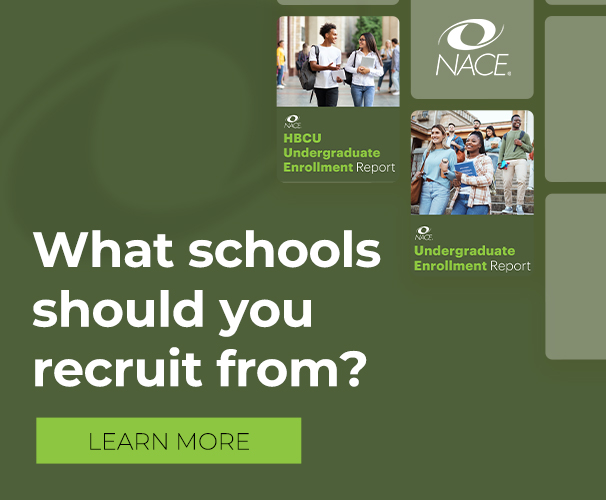No matter what products or services your company offers, it’s important to know that your best inventory still walks through your front door every day. If you want to stay competitive, hiring and keeping the best people is paramount.
This is where onboarding comes in. Contrary to popular belief, proper onboarding isn’t all about benefit forms, setting up voicemail, and pointing out the restrooms. As Lilith Christiansen and Mark Stein say in Successful Onboarding: Strategies to Unlock Hidden Value Within Your Organization, it’s more about the strategic integration of new hires in a way that’s designed to decrease turnover by increasing engagement.
Onboarding is a hugely under-focused management issue, perhaps because the return isn’t immediate and the retention gains typically aren’t eye-popping. However, onboarding is directly tied to the organization’s talent, and if you don’t have great staff in place, things fall apart.
Yet, companies still fail to understand the massive importance of the initial six-to-12-month window to the success of their retention efforts. And despite spending an extraordinary amount of resources trying to recruit the best candidates, businesses still leave them alone to “sink or swim” once they’re hired.
(For a sample onboarding plan, see “Creating a Plan for Onboarding Success.”)
Why Onboarding Programs Fail
It’s important to note that every new hire in your organization is indeed onboarded because every employee has experiences that form his or her initial impressions of your company. The real question is whether or not these impressions make them want to give you their all. As you embark on your own onboarding journey, be alert for these common pitfalls that cause onboarding programs to fail:
- No manager or department is directly responsible—As a result, new hires will come in and, if no one is tasked with “taking charge” of their orientation, they are usually passed back and forth between managers who haven’t been adequately briefed on their arrival. The experience for the new hire is almost always underwhelming.
- There is limited management interest or involvement—Whether starting a program from scratch or revamping an existing one, begin by scheduling a meeting with the company’s executive management team to brainstorm one question: “What can we do to get our new hires productive faster while making them excited to work here?” This will accomplish two things: First, you get better buy-in from the top if they’re involved at the outset. Second, it sends a signal to everyone else that onboarding is taken seriously at your organization.
- New employers are given too much information too quickly—Many businesses just want to “get it over with” so new hires can increase their time to productivity. That approach tends to overwhelm employees with a lot of information in a short period of time. It’s much better to extend your onboarding program to a longer time frame (six-to-12 months is ideal) so you can give hires bite-sized chunks of information over a longer period.
- Onboarding is viewed as a checklist or “orientation paperwork”—Are your current onboarding efforts about compliance or engagement? Obviously, it’s important to make sure employees have the required payroll, tax, and benefit forms completed, but that’s just the beginning. What are you doing beyond that to ensure your employees are connecting with colleagues, learning the necessary technical functions, and feeling like they belong to a great organization? If the answer is “not much,” you have missed out on a huge opportunity.
How to Engage Employees
Onboarding is all about getting new hires engaged. This is significant since there is an alarming amount of disengagement in the workplace. The truth is that most employees aren’t inherently disloyal; they are simply searching for work that is both satisfying and engaging. It’s important to note that job satisfaction and engagement aren’t the same thing. Satisfied employees will keep the company afloat, but engaged employees will help the organization grow. Here are a few ways to build engagement into your onboarding efforts:
- Start with a quick employee survey—This will help provide a good baseline assessment to use for comparison purposes at the conclusion of formal onboarding efforts. Sample questions could include: How would you rate your overall satisfaction at our company? Are we meeting your expectations? Do you have the tools and resources you need to be successful? If you survey consistently, you’ll have comparative data you can use to continually tweak your program so it evolves and improves over time.
- Work with new hires to create individual career/growth plans—Donʼt just assign goals and targets; have managers sit down with each new hire and ask questions such as, “Where do you see yourself growing in the company?” “What do you want to achieve?” “Do you have any personal goals that we can support?” Engagement comes from employees feeling like they are respected and have a stake in the success of the company. Creating career/growth plans helps because it not only gives new hires success benchmarks, but simply asking how you can support them builds loyalty.
- Hold your leaders accountable—When an employee complains about work, the problem often is not with the job; itʼs with the manager. The shortage of good, quality mentors and leaders in the work force today is directly proportional to the shortage of employee loyalty. Itʼs a cause and effect relationship. Since “leadership” is a tough quality to measure, a good starting point would be to hold every manager accountable for how his/her employees answer questions on an annual employee engagement survey.
- Tell them your plans—“Satisfied” employees are getting a paycheck, but “engaged” employees are contributing to your mission. To be engaged, your employees need to know their performance targets and the mission of the company beyond making money. For example, have your managers explain to new employees the core values of client service and give them a mission that is beyond profits (that is, serving clients and solving problems).
Developing Your Onboarding Curriculum
What specific items should you cover in your onboarding curriculum? As Christiansen and Stein state in Successful Onboarding, regardless of your business, every onboarding curriculum should focus on three areas:
- Technical skills—First and foremost, you need to teach your employees the specific skills they need to know to succeed in their jobs. It helps to assign work immediately, since new hires often get bored with endless training modules and want to contribute and be challenged right away. This obviously shouldn’t be a major project they are not qualified for, but support work linked to a larger, long-term job where they can get plugged in to a team and work on something that matters.
- Cultural assimilation—This includes formal instruction on your organization’s core values and social norms so new hires don’t have to “guess” or learn these things the hard way. For example, talk about what time you expect employees to arrive each day, while also covering larger issues such as what respect looks like in your office. For new grads in particular, you have to define these things in detail because their work experience has probably been limited to a few months of interning. Also, be completely honest when talking to new grads about your company culture. Distinguish between the aspirational culture of their organization and the current culture to give new employees information to be successful in the current environment, and, hopefully, become agents of change that can help the company move toward its aspiration.
- Social assimilation—Finally, how vested an employee feels in a company has a lot to do with the social relationships he or she makes. As part of the onboarding process, make it easy for colleagues to get to know each other by scheduling at least one networking event per quarter. This could include an out-of-office happy hour, but it could also include in-office mentoring with high-level team members. Organize a lunch on the first day with new employees and their team, or give new hires a week’s worth of gift certificates so they can take a different colleague out to lunch each day.
Focus on Firsts
Regardless of how much classroom instruction they get and how much employees bond with each other, there will come a point where every new hire has a “first” that is important to that person’s overall onboarding experience. Christiansen recommends that—in addition to technical, cultural, and social training/assimilation—managers take great care to help new grads in particular through these important career milestones. It’s not necessary to hold their hands through each one, of course, but to gently provide “coaching and couching” for new hires in the early stages of their employment.
According to Christiansen, some of the most important firsts for new hires are their first:
- Administrative problem.
- On-the-job mistake.
- Personality conflict.
- Real “win.”
- Time receiving negative feedback/constructive criticism.
- Public recognition (or failure to be recognized).
- Time the new hire doesn’t know the answer.
- Company-sponsored social event.
- Time speaking up at a meeting.
- Presentation at a meeting.
- Client visit.
Having someone from within the organization responsible for guiding new hires through these firsts is very important to prevent any mistakes in protocol, misunderstandings, or—at worst—customer service errors.
How’s the New Job Going?
This is the main question that new hires will be asked as they leave the confines of your organization and, oftentimes, the quality of the onboarding program will determine the quality of the answer. What happens to the company brand when an ex- or current employee raves about the organization to his or her friends, family, and social media connections? Alternatively, what happens when they talk negatively about the company?
When onboarding experiences are on point, the company receives the ancillary benefit of arming new hires with positive stories they can share both online and off. This is critical to leverage because new hires are not only the future of the company, but they are also its best marketers and recruiters. It’s up to you to ensure they get off on the right foot with proper onboarding and understand how to become solid ambassadors for the organization.
Posted March 2016. This article is adapted from “All Aboard! Take Your Onboarding Program From Lackluster to Blockbuster” by Emily Bennington, which appeared in the April 2012 issue of the NACE Journal.






